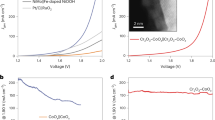Abstract
HYDROGEN SULPHIDE may be evolved in anoxic sulphur-containing river or lake sediments1. The effect of the presence of sulphide on the availability of inorganic mercury for biological methylation has been considered previously. Essentially mercury in the form of Hg(0) or Hg(II) may be converted into mercuric sulphide in anoxic sediments2. It might seem that this very insoluble material would not, in practice, be available for methylation and that sulphide formation would act as a method of removing mercury from availability to the general environment (that is, it would act as a mercury sink). However in a complex natural system (aquarium sediment) it has been shown that HgS may, in fact, be methylated in the sediments although to produce quantities of methyl mercury substantially less than those produced using a more soluble mercury substrate2. Therefore, although H2S in a sediment would be expected to reduce the rate of mercury methylation considerably by the formation of HgS, it would not be expected to prevent formation of methyl mercury entirely. The effect of H2S on methyl mercury itself has also been investigated using a purely inorganic model3. An aqueous solution of methyl mercuric chloride (1 mg dm−3) loses methyl mercury steadily over 3 days after initial exposure to H2S. A volatile product was evolved into the space above the solution. This product was trapped in a sodium carbonate–disodium phosphate solution, extracted with toluene and shown to co-migrate with methyl mercury on thin layer plates of silica gel. It was concluded that the evolved product of the reaction system was a volatile organo-sulphur derivative of mercury that reverted to methyl mercury on extraction. These observations suggest that reaction between methyl mercury and H2S generated in sediments reduces the amount of methyl mercury available for accumulation by fish and shellfish and represents a powerful mechanism adding to the general mobility of mercury compounds in the environment. It is therefore important to identify the unknown mercury compound evolved from the system described above. We have now investigated the interaction of H2S with River Mersey (England) inter-tidal estuary sediment samples in order to determine its effect on methyl mercury levels in real systems. We have also investigated similar reactions in a model system, leading to the identification of the previously unknown volatile mercury species responsible for the transport of mercury in the work of Rowland et al.3
This is a preview of subscription content, access via your institution
Access options
Subscribe to this journal
Receive 51 print issues and online access
$199.00 per year
only $3.90 per issue
Buy this article
- Purchase on Springer Link
- Instant access to full article PDF
Prices may be subject to local taxes which are calculated during checkout
Similar content being viewed by others
References
Aston, S. R. & Chester, R. in Estuarine Chemistry (eds Burton, J. D. & Liss, P. S.) (Academic, New York, 1976).
Fagerstrom, T. & Jernelov, A. Water Res. 5, 121–122 (1970).
Rowland, J. R., Davies, M. J. & Grasso, P. Nature 265, 718–719 (1977).
Bartlett, P. D., Craig, P. J. & Morton, S. F. Nature 267, 606–608 (1977).
Heslop, R. B. & Robinson, P. L. Inorganic Chemistry 3rd edn, 8 (Elsevier, Amsterdam, 1967).
Dadic, M. & Grdenic, D. Croatia chem. Acta 32, 39–42 (1960).
Wollast, R., Billen, G. & Mackenzie, F. T. Environ. Sci. Res. 7, 145–167 (1975).
Whitmore, F. C. Organic Compounds of Mercury (Chemical Catalog Co., New York, 1921).
Bartlett, P. D. & Craig, P. J. Science of the Total Environment (in the press).
Author information
Authors and Affiliations
Rights and permissions
About this article
Cite this article
CRAIG, P., BARTLETT, P. The role of hydrogen sulphide in environmental transport of mercury. Nature 275, 635–637 (1978). https://doi.org/10.1038/275635a0
Received:
Accepted:
Issue Date:
DOI: https://doi.org/10.1038/275635a0
This article is cited by
-
The fate of methylmercury through the formation of bismethylmercury sulfide as an intermediate in mice
Scientific Reports (2021)
-
Mercury transport and fate in municipal solid waste landfills and its implications
Biogeochemistry (2020)
-
Dimethylmercury Formation Mediated by Inorganic and Organic Reduced Sulfur Surfaces
Scientific Reports (2016)
-
Total mercury and methylmercury in sediments and in the polychaeteNereis diversicolor at Groot Buitenschoor (Scheldt estuary, Belgium)
Water, Air, and Soil Pollution (1997)
Comments
By submitting a comment you agree to abide by our Terms and Community Guidelines. If you find something abusive or that does not comply with our terms or guidelines please flag it as inappropriate.



